Travel Tips for Those with Young Children
For many of you, this is the most uplifting time of the year. While some may think that I am talking about March Madness (which is almost always more heartbreaking than uplifting for Badger fans), I am actually talking about Spring Break! In the coming weeks, the winter weather and long winter nights will be fading fast (…or so we hope). With that comes more travel, as many will take to the skies or get behind the wheel while off of school, to go visit a warmer locale or see family out-of-state.
Like most of us at Lake Country Pediatrics, S.C. and Delafield Pediatrics, TM, if you have experienced traveling with younger children before, you can probably stop reading this, as you have learned the lessons first-hand and have most likely developed a system for dealing with the ins and outs! I remember like it was yesterday, traveling home from out-of-state with our first-born 18-month old, and what a learning experience it was. For those that are new to the experience, here are a few key pointers to keep in mind:
For those who are flying:
- If you have an infant under two months of age, consider driving instead. Due to an immature immune system and lack of immunizations, they are at higher risk from airborne illnesses.
- Always leave extra time! While this is sound advice for ALL travelers, it particularly applies to those with kids. Filling out the extra baggage tags, explaining/engaging the child in the process, and getting through security with extra clothing, toys, stroller and breastmilk to be screened, will add time to your journey. Plus, there are always extra “bathroom breaks” for diaper-changing and kids with small bladders. Leaving an extra hour will pay dividends!
- When booking and checking in, ask the airline representative about special accommodations for those traveling with children. For some airlines, families with young children will have boarding preference without added charge.
- Bring a car seat. Though most airlines will allow those with children under age 2 to travel in a parents’ lap or in a carrier, the AAP and FAA both recommend that each child has their own seat, and to utilize it on the plane as you would for road travel. This also allows you to swap seats with your child, should there be an ill passenger seated next to you. A covered car seat for young infants also adds a physical barrier from illnesses.
- If it is not feasible to book an individual seat for your infant, you can still bring your car seat or stroller as checked baggage or gate-check it free-of-charge through all major airlines.
- Booster seats will not apply on the plane, but be sure to bring one for car travel afterwards if needed.
- If a flight will be more than 2-3 hours in length, consider a layover option to provide a break in travel and allow some sensory activity for the child.
- Take advantage of the “3-1-1 rule” (3.4 oz liquid bottles, up to 1 quart-size bag per passenger), and bring one or two hand sanitizer bottles with you for regular use while on the move.
- For breastfeeding moms, remember that you can carry an unlimited amount of breastmilk with you on the flight (provided you declare it as such), and your breast-pump should be considered a “medical device”, not a carry-on.
- Cotton balls are an easy-to-apply and cheap option for young infants to drown out engine noise.
- Air travel is generally well-tolerated by infants and young children, however scheduling a feeding for the ascent and the descent can relieve any added ear pressure which might develop. Tips on breastfeeding while flying can be found on the HealthyChildren website, here.
- If traveling out-of-country, a great personalized resource to check on required immunizations (including uncommon ones such as yellow fever, typhoid or rabies vaccine), malaria prevention needs and local outbreaks, is the CDC travel website: https://wwwnc.cdc.gov/travel.
- Bring an extra change of clothes, for yourself and your child, in your carry-on.
- Have fun on the journey! Be sure to bring plenty of healthy snacks, books to read, activity books and small toys for them to focus on during the flight.
- For those who are driving –
- Take breaks! Particularly with infants, you will want to take at least brief pauses to stretch, have a snack or a feeding and check/change the diaper, every two hours or so.
- Be sure that you are following the correct car seat and booster recommendations for your age and weight of child. For a full review of the recommendations surrounding car seats, click here.
- Never place a rear-facing car seat in a front seat with airbag capability.
- Avoid heavy or bulky winter clothing while your child is in the seat, due to fit concerns. Be sure to the warm the car up prior to embarking, remove the coat and use a thin blanket prior to buckling them in.
- To prevent motion sickness, have the child focus more on objects outside of the car periodically. This can involve playing the “License Plate Game”, “I Spy” or simply narrating and pointing out roadside sights throughout the trip. Ensure good ventilation and bring healthy food options with you in regular small portions…avoiding spicy foods and fast food as much as possible.
- Hard ginger candies have also been noted to potentially help prevent motion sickness. For kids over age two with significant symptoms, there are also over-the-counter options such as Benadryl and Dramamine Chewables to help with this issue.
- Never leave your child unattended in the car, due to the risk for heat injury.
Utilizing the above pointers, along with a pinch of patience and some time spent planning out your travel day(s) in advance, I hope you have a smooth and (relatively) stress-free journey!
